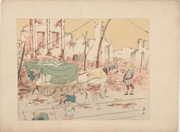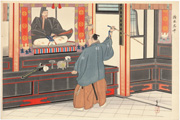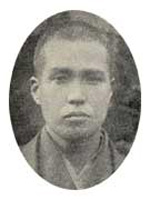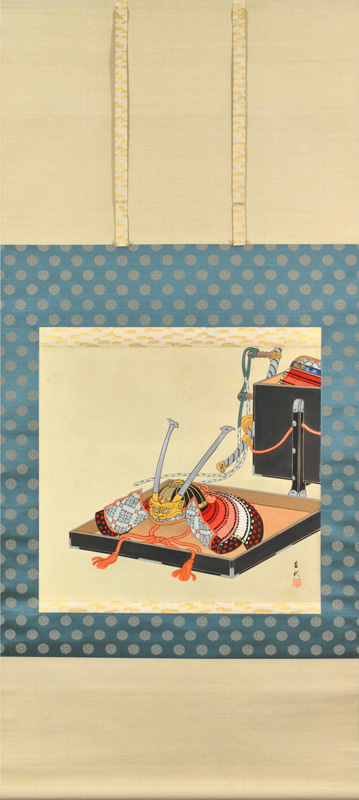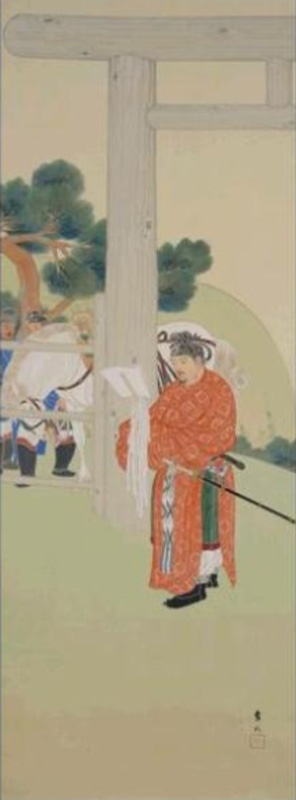| Isoda Chōshū 磯田長秋 (1880-1947) Sources: A Dictionary of Japanese Artists: Painting, Sculpture, Ceramics, Prints, Lacquer, Laurance P. Roberts, Weatherhill, 1976, p. 80; The Artist's Touch, The Craftsman's Hand: Three Centuries of Japanese Prints from the Portland Art Museum, Maribeth Graybill, Portland Art Museum, Oregon, 2011, p. 282; website of The Asahi Shimbun Company / VOYAGE GROUP, https://kotobank.jp/word/%E7%A3%AF%E7%94%B0%E9%95%B7%E7%A7%8B-1053950 Isoda, born Uchida Magosaburō in Tokyo on May 5, 1880, wasadopted by the Isoda family at the age of nine. A nihonga painter, he first studied under a minor Kanō school painter and later under Kobori Tomone (1881-1968) of the Tokyo School of Fine Arts,a yamato-e painter, famous for hishistorical works. In 1900, along with Yasuda Yukihiro (1884-1978) and other students of Kobori’s, Isoda founded the Shikōkai 紫紅会 (later renamed Kōjikai 紅児会), an elite association of nihonga painters which brought new ideas and perspectives to the Japanese art world. Isoda exhibited regularly at the government sponsored Bunten, winning several prizes, and served fifteen years as a judge on the Teiten. He passed away at the age of 68 on October 25, 1947. |
Mainly known for his paintings, several examples of which follow, he created the designs for six prints in the 1924 series Collection of Woodblock Prints from the Taishō Earthquake published by Hoshino Seki of the Tokyo publishing house Gahōsha. He also contributed the design for at least one print to the c. 1942 patriotic print series 近世勤皇家三十傑 (Thirty Great Loyalists of Early Modern Times).
Sample Signatures and Seals
